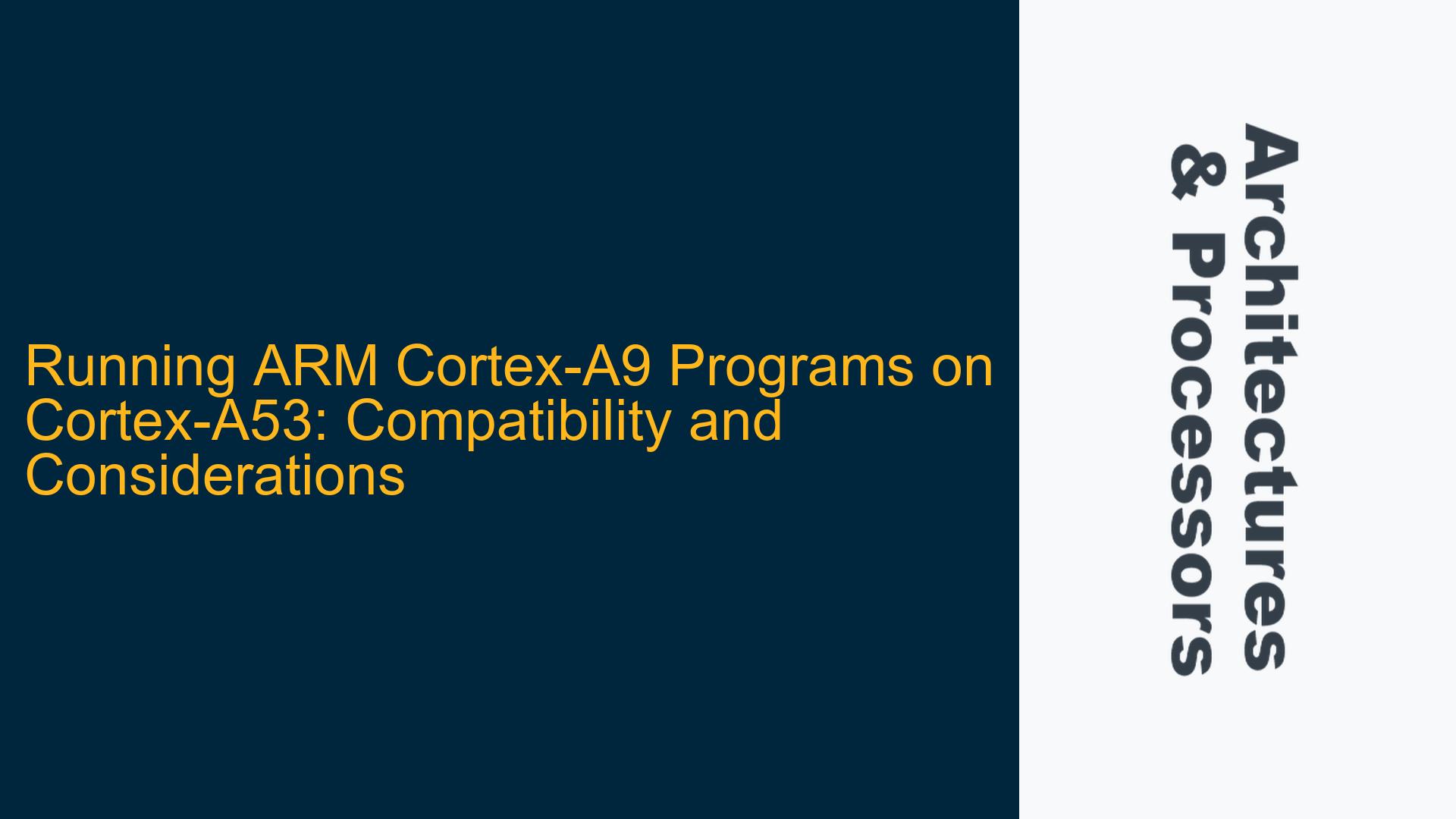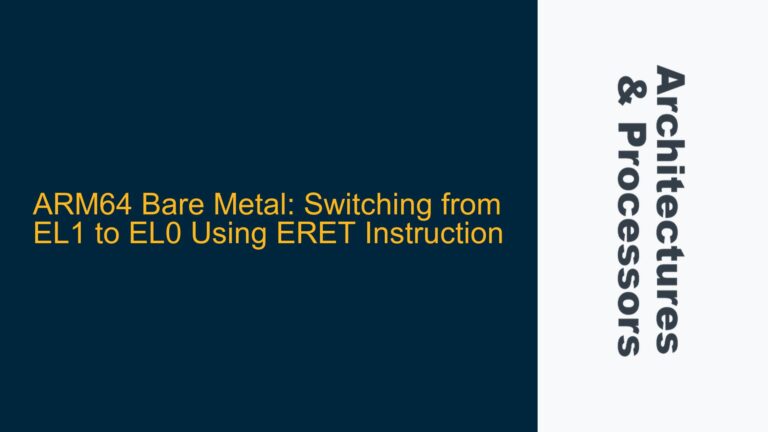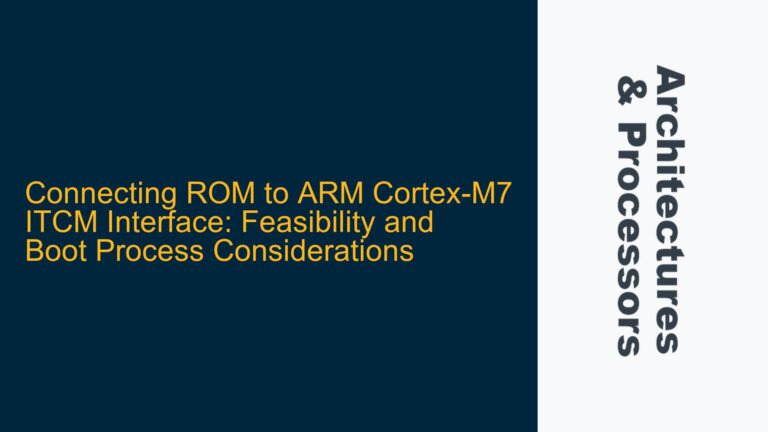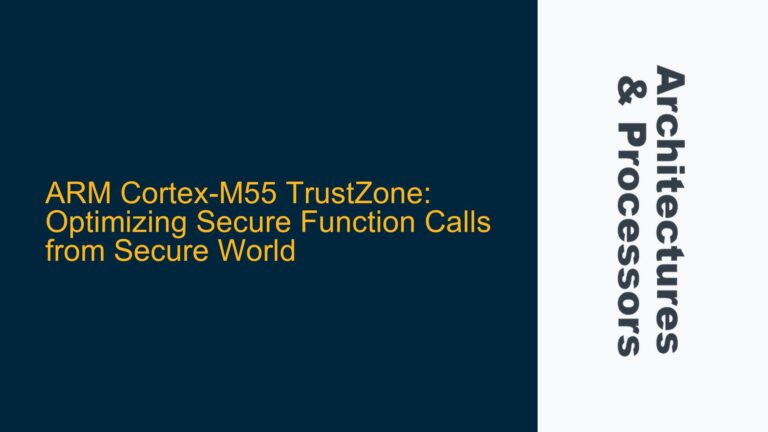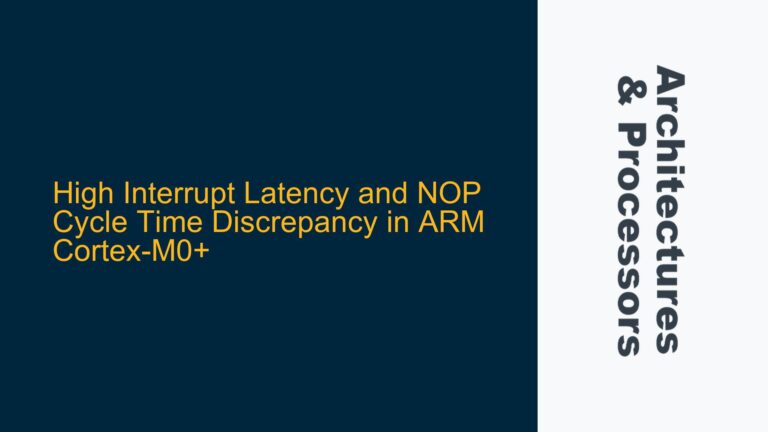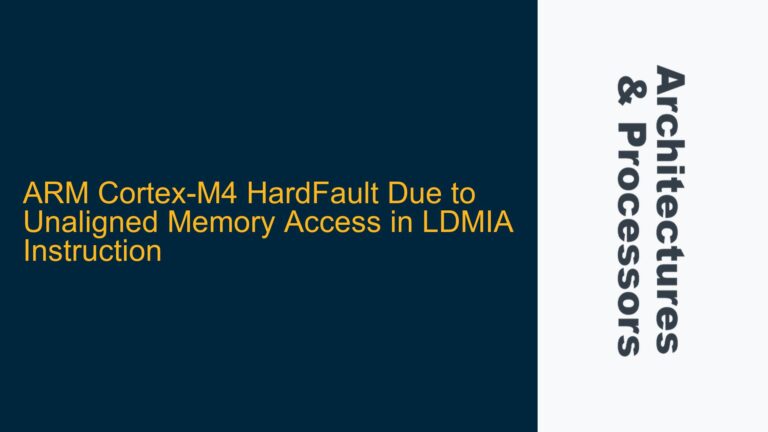ARM Cortex-A9 to Cortex-A53 Program Execution Compatibility
The transition from an ARM Cortex-A9 to an ARM Cortex-A53 processor involves several architectural considerations that can impact the execution of existing programs. The Cortex-A9, based on the ARMv7-A architecture, and the Cortex-A53, based on the ARMv8-A architecture, share some similarities but also have significant differences that must be addressed to ensure seamless program execution. The primary concern is whether a control program originally developed for the Cortex-A9 can run on the Cortex-A53 without modification or recompilation. This issue is particularly relevant when upgrading embedded systems, where the control program is tightly coupled with the hardware and operating system.
The Cortex-A53 processor supports both AArch32 and AArch64 execution states, allowing it to run 32-bit and 64-bit applications. However, the Cortex-A9 is strictly a 32-bit processor, meaning that any program designed for the Cortex-A9 must run in the AArch32 state on the Cortex-A53. This requirement implies that the Linux kernel and the control program must be configured to operate in 32-bit mode. Additionally, the differences in the instruction set architecture (ISA), memory management, and peripheral interfaces between the Cortex-A9 and Cortex-A53 can introduce subtle compatibility issues that may not be immediately apparent.
The compatibility of the control program also depends on the specific features and optimizations used in the original implementation. For instance, if the control program relies on specific Cortex-A9 hardware features or instructions that are not present or behave differently in the Cortex-A53, modifications may be necessary. Furthermore, the operating system environment, including the Linux kernel version and device drivers, must be compatible with both the Cortex-A9 and Cortex-A53 architectures to ensure that the control program can interact correctly with the hardware.
Architectural Differences and Potential Compatibility Issues
The ARM Cortex-A9 and Cortex-A53 processors, while both belonging to the ARM family, exhibit several architectural differences that can affect program compatibility. These differences span the instruction set, memory management, cache architecture, and peripheral interfaces, each of which can introduce potential issues when running a Cortex-A9 program on a Cortex-A53 processor.
One of the most significant differences is the instruction set architecture. The Cortex-A9 implements the ARMv7-A ISA, which includes the Thumb-2 instruction set and optional VFPv3 and NEON extensions for floating-point and SIMD operations. The Cortex-A53, on the other hand, implements the ARMv8-A ISA, which introduces new instructions and features, including support for 64-bit processing. While the Cortex-A53 can execute ARMv7-A instructions in AArch32 state, certain instructions and behaviors may differ, leading to potential incompatibilities. For example, the Cortex-A53 may handle exceptions, interrupts, and memory barriers differently than the Cortex-A9, which can affect the control program’s behavior.
Memory management is another area where differences between the Cortex-A9 and Cortex-A53 can impact program compatibility. The Cortex-A9 uses a Memory Management Unit (MMU) that supports the ARMv7-A memory model, including the Short-descriptor translation table format. The Cortex-A53, in contrast, supports both the ARMv7-A Short-descriptor format and the ARMv8-A Long-descriptor format in AArch32 state. If the control program relies on specific MMU configurations or memory attributes that are not supported or behave differently in the Cortex-A53, modifications may be required to ensure correct operation.
Cache architecture and coherency mechanisms also differ between the Cortex-A9 and Cortex-A53. The Cortex-A9 features a unified L2 cache, while the Cortex-A53 typically includes separate L1 instruction and data caches and an optional L2 cache. These differences can affect the performance and behavior of the control program, particularly if it relies on specific cache management techniques or assumes a particular cache hierarchy. Additionally, the Cortex-A53 introduces new cache maintenance operations and coherency protocols that may not be present in the Cortex-A9, potentially leading to issues if the control program does not account for these differences.
Peripheral interfaces and system-level features can also introduce compatibility challenges. The Cortex-A9 and Cortex-A53 may have different implementations of system control registers, interrupt controllers, and other peripherals that the control program interacts with. If the control program makes assumptions about the behavior or configuration of these peripherals based on the Cortex-A9 architecture, it may not function correctly on the Cortex-A53 without modification. Furthermore, the Cortex-A53 may introduce new features or enhancements that are not available in the Cortex-A9, such as advanced power management or security features, which may require adjustments to the control program to fully leverage the capabilities of the new processor.
Ensuring Compatibility: Configuration, Testing, and Optimization
To ensure that a control program originally developed for the ARM Cortex-A9 can run on the ARM Cortex-A53 without modification or recompilation, several steps must be taken to address the architectural differences and potential compatibility issues. These steps involve configuring the operating system and hardware environment, thorough testing, and optimizing the control program to account for the differences between the Cortex-A9 and Cortex-A53 architectures.
The first step is to configure the Linux kernel and the control program to operate in 32-bit mode (AArch32) on the Cortex-A53. This configuration ensures that the control program can execute ARMv7-A instructions and interact with the hardware in a manner consistent with the Cortex-A9. The Linux kernel must be rebuilt with the appropriate configuration options to support AArch32 execution, and any device drivers or kernel modules used by the control program must be compatible with the Cortex-A53 architecture. Additionally, the bootloader and firmware must be updated to initialize the Cortex-A53 processor and peripherals correctly, ensuring that the hardware environment is consistent with the control program’s expectations.
Thorough testing is essential to identify and address any compatibility issues that may arise when running the control program on the Cortex-A53. This testing should include functional testing to verify that the control program behaves as expected, performance testing to ensure that the program meets its timing and resource requirements, and stress testing to identify any edge cases or corner conditions that may cause the program to fail. Special attention should be paid to areas where the Cortex-A9 and Cortex-A53 architectures differ, such as exception handling, memory management, and cache coherency, as these are the most likely sources of compatibility issues.
Optimizing the control program to account for the differences between the Cortex-A9 and Cortex-A53 architectures can further enhance compatibility and performance. This optimization may involve modifying the program to use Cortex-A53-specific features or instructions, adjusting memory management and cache maintenance operations to align with the Cortex-A53 architecture, and updating peripheral interactions to reflect any changes in the hardware environment. Additionally, the control program should be reviewed for any assumptions or dependencies on Cortex-A9-specific behavior that may not hold true on the Cortex-A53, and these should be addressed to ensure robust operation.
In conclusion, while it is possible to run a control program developed for the ARM Cortex-A9 on the ARM Cortex-A53 without modification or recompilation, careful consideration must be given to the architectural differences between the two processors. By configuring the operating system and hardware environment, conducting thorough testing, and optimizing the control program, it is possible to achieve seamless compatibility and leverage the enhanced capabilities of the Cortex-A53 processor.
